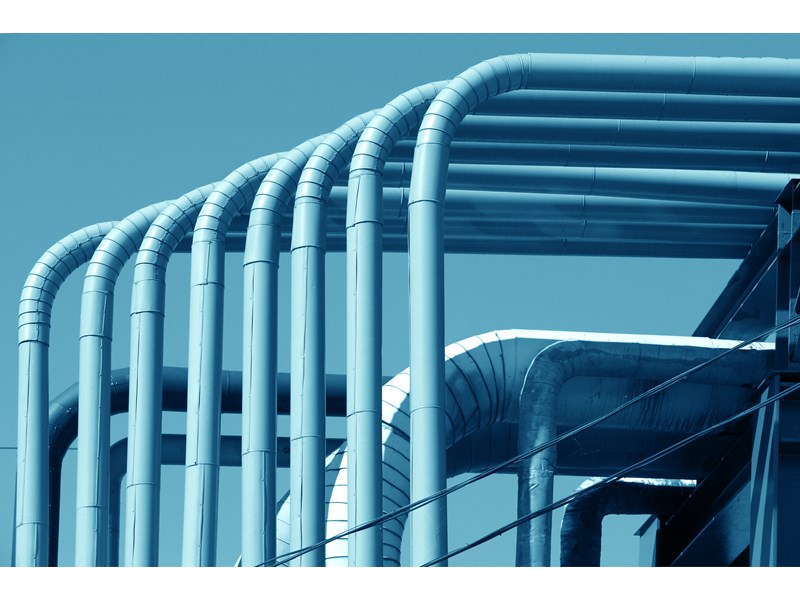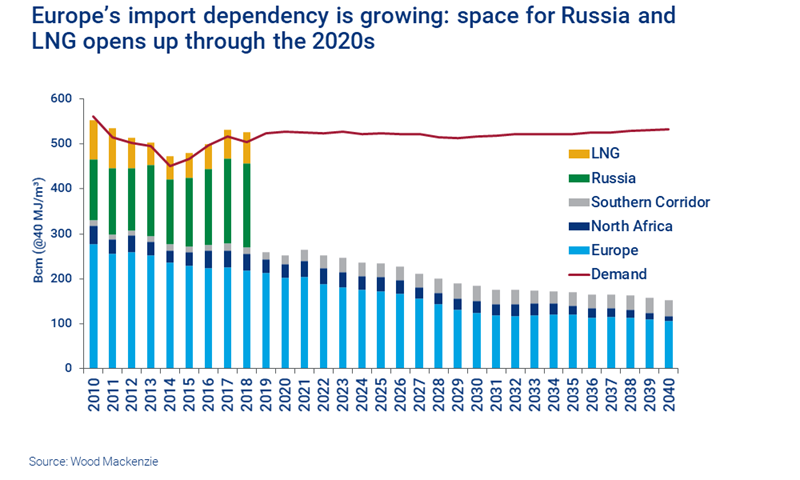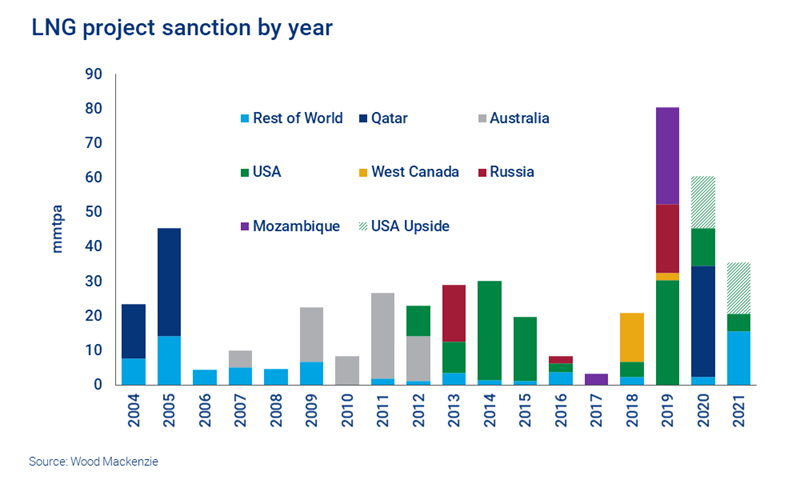Do European utilities still have an appetite for LNG?
Against the backdrop of the energy transition, European utilities are re-evaluating their exposure across the gas value chain.
1 minute read
Murray Douglas
Vice President, Hydrogen & Derivatives Research

Murray Douglas
Vice President, Hydrogen & Derivatives Research
Murray is responsible for Wood Mackenzie’s global coverage across the hydrogen value chain.
Latest articles by Murray
-
Opinion
Our top takeaways from the World Hydrogen Summit
-
Opinion
eBook | The hydrogen opportunity from now to 2050: what utilities and developers need to know
-
Opinion
eBook | The hydrogen opportunity from now to 2050: what industrial players need to know
-
Opinion
eBook | Investing in hydrogen from now to 2050: what you need to know
-
Opinion
What lies ahead for hydrogen and low-carbon ammonia?
-
Opinion
Ebook | Overcoming the challenges around hydrogen deployment
The European gas landscape continues to evolve. LNG oversupply has finally materialised – flooding European markets. And as Russian pipe exports persist, hub prices have crashed. Our latest figures show that these low prices are set to continue.
Meanwhile, resilient demand and declining indigenous production mean Europe’s import dependency is growing. And the global emphasis on a low-carbon future is a driving force of industry-wide change.
European utilities retain several incumbency advantages. They hold long-term contracts, established customer relationships and access to infrastructure. And an inherent understanding of Europe's complex regulatory environment.
However, they also have the most to lose. The increasingly competitive market is evolving at pace. Companies with gas exposure face a number of threats – but opportunities still exist. As the energy transition takes hold, utilities are re-evaluating their exposure across the gas value chain.
Decarbonisation is altering Europe’s corporate landscape
Many European utilities are narrowing their focus, with a growing number scaling back or exiting the upstream space. In July 2019, Edison sold its exploration and production operations – the sale aligning with parent EDF's intent to position itself for the energy transition. RWE divested its upstream business in 2015, followed by Orsted and Engie in 2017 and VNG in 2018. Centrica has reaffirmed its intention to exit upstream by the end of 2020.
Upstream and coal divestments have been the first disposals on the agenda, alongside brand repositioning. But the shift has also extended to LNG. Engie’s dramatic transition was underpinned by selling its LNG business to Total amid its strategic shift to a low-carbon future. Iberdrola, too, recently sold its LNG business to Pavilion Energy.
Other players are taking a different stance. Uniper and RWE are actively pursuing options for LNG import capacity in Germany. EDF, Centrica and RWE have all established cooperation agreements with Japanese utilities, looking to exploit cross-basin opportunities.
How are European utilities buying gas and LNG today?
While some utilities have increased their LNG spot purchasing activity, in many cases this is primarily to hedge customer positions. That said, many are retaining the traditional business model: buying pipeline gas volumes for their legacy home markets.
Margins are thinner than ever. As gas production from the UK and Netherlands continues to decline, the options to buy pipeline gas have reduced. Equinor is marketing increasing volumes of its gas on the spot market. Gazprom is increasingly using its subsidiaries, Wingas and Gazprom Marketing & Trading – as well as its blossoming Electronic Sales Platform – to reinforce market share.
Nonetheless, Europe's requirement for gas imports continues to expand – so opportunities will emerge, as our long-term outlook shows. We believe that by 2030, Europe will need to import over 400bcm of gas per year, up from almost 310bcm in 2018.
Only 12% of Europe’s imports by 2030 will be piped from North Africa and through the southern corridor. This will leave a significant gap for Russian piped supply and LNG to fill.
Russia’s response to Europe’s changing marketplace
Russia has long stood as Europe’s largest gas supplier. But new gas pipeline development growth is looking unlikely beyond the Nord Stream 2 and TurkStream projects which start in 2020. And uncertainty continues to cloud the future of Ukraine transit.
For Russia to further increase its footprint in the European as well as the global gas market, the country needs to revise its traditional export model. Expanding LNG is the answer. It will help to derisk against political tensions with Europe and provide Russia with flexibility against the backdrop of the EU’s decarbonisation objectives. Russia’s journey from piped to LNG exports will increase global exposure while providing flexibility and opportunity to respond more quickly to price and market signals. Importantly, new LNG projects in the Arctic are economically competitive against other options.
Return of the FID: another LNG wave awaits
Russia isn't the only major gas producer looking to expand its LNG footprint. We still expect a record number of global LNG FIDs this year.
What does this mean for European utilities?
European utilities will be courted by a growing number of sellers marketing long-term LNG volumes from pre-FID LNG supply projects. But it will be complicated for these utilities to agree upon pricing terms to support a subsequent LNG wave. The European gas market is increasingly dominated by hub pricing. This poses a challenge for utilities, as LNG is widely priced through oil-indexation, or at Henry Hub.
US LNG suppliers like the liquidity of Europe. But European utilities’ appetite for Henry Hub price risk is limited – and likely to remain so. Resolving this impasse may be possible through more creative deals. If utilities don’t find a way, they run the risk of losing significant market share to LNG portfolio players and commodity traders.
But equally, US LNG sellers will be weary of significant LNG volumes being marketed by competing projects in Qatar, Russia and Mozambique. Will they be willing to price LNG into European hubs?
Learn more at Gastech
Will European utilities’ still have an appetite to contract for LNG into Europe? And what can they do to protect and leverage their incumbent advantages? To find out more, join me at Gastech in Houston on 17 September, for the S1.1 session: New Business Models for a New Energy Landscape at 2pm CDT.
Gastech delegates: reserve your limited edition LNG wall map by filling in the form on this page. We'll have it ready for you at booth #K330.









